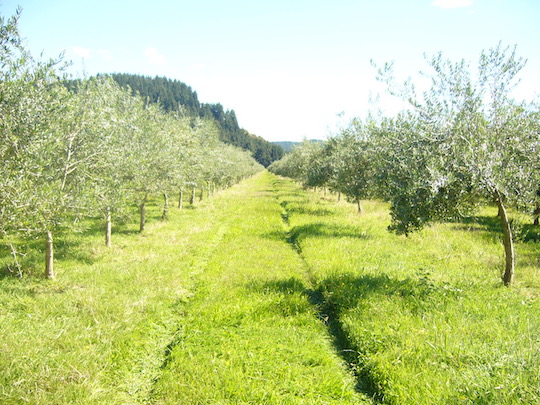New Zealand is the country, of all the 64 current industrial producers of olive oil in the world, which is farthest from Spain. The harvest for the aforementioned country begins in March or April and ends in June or July. It has a total of 2,500 ha of olive groves with single-trunked olive trees, which is intensive and has a marking that is approximately 6 by 4m, facilitating its harvest with an inverted umbrella harvester. Their global production of olives is around 4 million kg, while their oil production is closer to one million. As for varieties, it mainly contains Picual, Hojiblanca, Manzanilla, Barnea, Frantoio and Koroneiki, among others. Its principal activity is obtaining EVOO, reserved for the most part for self-consumption. Although, they also export part of their production, mainly to Australia and to the Asian market.
From north to south, olive trees are dispersed throughout the two main islands on quite distinct olive farmlands. They are quite different due to the orographic and geographic characteristics of the islands. On occasions, the farmlands can be found directly on the coast, where there is quite a striking and characteristic landscape.
In regards to the size of the farms, they are between 1 and 4 hectares to 70 hectares, which is the maximum size that can be seen in this geography. There are 60 to 70 operations in total. They are especially interested in organic crops. The majority of the farms are rainfed, even though there is a rainfall of 1,500 cubic meters, depending on the region. This generates some difficulties in the crops, such as with pests and with crop handling.
In respect to olive mills in the country, there are no more than 15 small-sized ones, dedicated to obtaining early harvest olive olives, which are of an elevated quality. Also, in an association which brings together all the producers, known as Olives New Zealand. They have awards that they give out each campaign for the best olive oils in the country in the Olives New Zealand Olive Oil Awards.
Central Otago is located in the Southern Island of New Zealand, and has an olive grove with trees of the Koroneiki variety. This is about 3 hectares, and is rainfed with a 6 x 4m marking. It is the southernmost olive grove on the planet. It coordinates are 45 ° 53 ′ 0 ″ S , 170 ° 30 ′ 0 ″ E. It produces healthy olive trees that generate flat oils that are rich in flavors. Its climate is characterized by hot summers with little humidity; Winter mornings are often foggy. There cloudless days and windy and frosty nights. It has the average annual precipitation of 340 mm. The density of people per square mile is about 7. The distance between Jaén, the largest producer of olive oil in the world and this farm is 20,000 km. You would only have to fly a 23 hour flight to get there.

